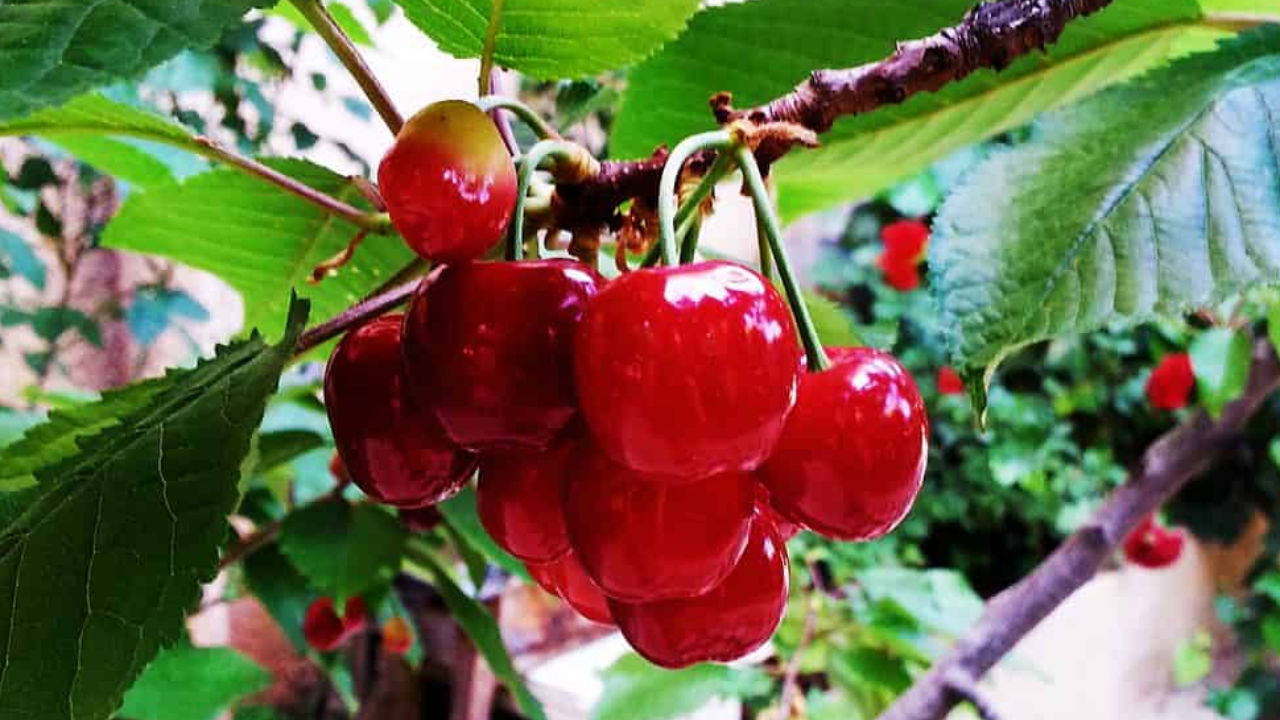The Nanking cherry (Prunus tomentosa) is a hardy, versatile shrub that produces delicious, tangy-sweet fruit. Unlike traditional cherry trees, this compact plant thrives in cold climates, requires minimal care, and offers multiple benefits—from ornamental beauty to edible harvests. Whether you’re a home gardener, permaculture enthusiast, or just curious about unique fruits, this guide will teach you everything you need to know about growing, harvesting, and using Nanking cherry.
What is a Nanking Cherry?
The Nanking cherry is a deciduous shrub native to northern China, Korea, and Mongolia. It’s known for its:
- Compact size (typically 6–10 feet tall and wide).
- Early spring blooms (fragrant white or pale pink flowers).
- Bright red cherries (small, tart, and packed with flavor).
Unlike sweet cherries (Prunus avium), which grow on large trees, Nanking cherry form dense, bushy shrubs, making them ideal for hedges, windbreaks, or small gardens. They’re also incredibly cold-hardy, surviving temperatures as low as -40°F (USDA zones 2–8).
How to Grow Nanking Cherry
1. Choosing the Right Location
Nanking cherries thrive in:
- Full sun (at least 6 hours daily) but tolerate partial shade.
- Well-draining soil (they dislike waterlogged roots).
- Sheltered spots (to protect blooms from late frosts).
2. Planting Nanking Cherry Shrubs
- When to plant: Early spring or fall.
- Spacing: 4–6 feet apart for hedges, 8–10 feet for standalone shrubs.
- Soil prep: Loosen soil and mix in compost for better fertility.
Pro Tip: While Nanking cherries are self-fertile, planting multiple shrubs improves pollination and fruit yield.
3. Watering and Feeding
- First year: Water deeply once a week to establish roots.
- Mature plants: Drought-tolerant; only water during extreme dry spells.
- Fertilizer: Light feeding in early spring with balanced organic fertilizer (10-10-10).
4. Pruning for Better Growth
- When: Late winter or early spring (before new growth).
- How:
- Remove dead or diseased branches.
- Thin out crowded stems to improve air circulation.
- Trim back leggy growth to encourage bushiness.
Nanking cherries produce fruit on second-year wood, so avoid over-pruning.
5. Pest and Disease Resistance
These shrubs are remarkably resilient but may occasionally face:
- Aphids – Spray with water or neem oil.
- Birds – Use netting if they eat too much fruit.
- Fungal issues – Ensure good airflow and avoid overhead watering.
Harvesting Nanking Cherry
When to Pick
Nanking cherry ripen in mid-to-late summer (July–August, depending on climate). Signs of ripeness:
- Deep red color.
- Slightly soft texture.
- Easy detachment from the stem.
How to Harvest
- Gently twist or snip clusters off the shrub.
- Collect in shallow containers to avoid crushing.
- Process quickly—they don’t store well fresh.
Yield: A mature shrub can produce 5–10 pounds of fruit per year.
Ways to Enjoy Nanking Cherry
1. Fresh Eating
- The tart-sweet flavor is great for snacking (remove pits).
2. Preserves and Jams
- Their high pectin content makes them perfect for jellies.
- Try a simple Nanking cherry jam with honey or sugar.
3. Baking and Desserts
- Use in pies, tarts, or muffins (like sour cherries).
- Make Nanking cherry syrup for pancakes or cocktails.
4. Fermented and Beverages
- Brew into homemade wine or liqueur.
- Infuse in vinegar for a fruity salad dressing.
5. Wildlife Attraction
- Birds love the fruit—great for eco-friendly gardens.
- Blooms attract bees and pollinators in early spring.
Why Grow Nanking Cherries?
- Cold-hardy – Survives harsh winters better than most fruit plants.
- Low-maintenance – Requires little pruning or watering once established.
- Dual-purpose – Beautiful flowers + edible harvest.
- Great for small spaces – Fits in urban gardens or permaculture designs.
Final Thoughts
The Nanking cherry is an underrated gem for gardeners seeking a resilient, productive, and beautiful plant. Whether you want a fruiting hedge, a pollinator-friendly shrub, or a unique ingredient for your kitchen, this hardy cherry delivers. With minimal care and maximum rewards, it’s a must-try for any fruit-growing enthusiast.









